
If you are interested in wildlife gardening and promoting biodiversity, your focus in February should be birds.
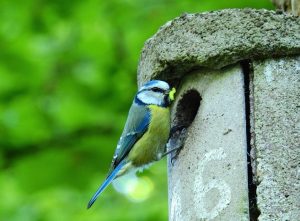
There are many reasons why bird numbers are declining, but one of the main ones is a housing shortage!
The good news is that you can do their bit to help, as mid-February is the start of Nestbox Week.
This is the call to all wildlife gardeners to clean up their bird feeding stations, clean out any old established nest boxes you have in the garden and consider putting up some new ones.
After months of cold, murky weather birds are out there actively hunting for food to build up their strength and are starting to pair up. February is the time they will start to scout around for a suitable nesting site, so make sure that you have your nest boxes cleaned up and in position so that they can check them out.
This article reviews which bird species are declining and why, and how to choose and maintain nesting boxes to help boost their populations.
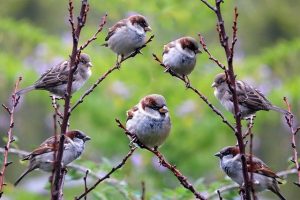
Why Are Birds Declining?
The decline in bird populations has been a slow and gradual process since the 1970s.
Grubbing up of hedgerows to create larger fields has removed both food and potential nesting sites. The shift from spring to autumn sown cereals has removed vital food source during the breeding season. Increased use of pesticides removes insects from the food chain and replacing old buildings with modern ones excludes nesting birds and bats
New measures to protect farmland birds were put in place in the 1990s, but they have not been enough to stop populations continuing to fall. New measures to protect birdlife are in the pipeline, and the need for them could not be more urgent.
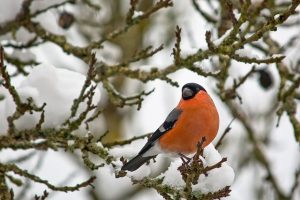
While some woodland species such as the blue tit are doing alright, there is evidence that populations of many woodland species are also on a downward trend.
Woodland species that have experienced significant declines in the last 30 years are the turtle dove (down 71%), song thrush (down 56%) and the bullfinch (down 53%).
It may surprise you to know that wildlife gardeners can help address the decline in farmland and woodland species.
The populations of birds in our gardens are in fact an overspill from the better habitats in the countryside.
Gardeners are custodians of a large amount of land. It has been estimated that if all the gardens in the UK were rolled up into one giant plot, it would be an area bigger than Suffolk! So, if we work to boost populations in our gardens, this in turn will help support wild populations.
Choosing a Nestbox
A good nestbox needs to provide shelter and security. Material and design are important.
The best boxes are made from wood or Woodcrete, a combination of sawdust and concrete. Both materials provide good insulation for eggs and chicks. The walls of the box should be at least 15mm thick to offer sufficient insulation.
Wooden nestboxes should be made of good quality timber that’s either recycled or sustainably resourced. A box made from hardwood like oak or beech will last longer than one made from pine.
Avoid nestboxes with perches. They are not necessary for the birds, and may even give squirrels and weasels a foothold as they raid the nest.
A hinged or removable lid is essential so that old nesting material can be easily removed at the end of the nesting period
The size and position of the entrance hole is important. The hole must be at least 120mm above the floor of the box is large enough to accommodate your hand so that cleaning out nest material is easy to do.
Birds have their own particular preferences when it comes to choosing a nestbox.
Here’s a quick guide to the types of boxes preferred by some of UK’s best known species.
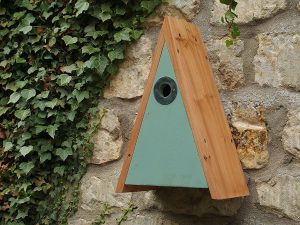 Some species prefer a nestbox with a small entrance hole.
Some species prefer a nestbox with a small entrance hole.
Examples are:
Blue Tit, Coal Tit, Great Tit, House Sparrow, Nuthatch, Tree Sparrow.
Choose this design if you’re interested in attracting these birds to your garden.
 Some species prefer an open-fronted nestbox
Some species prefer an open-fronted nestbox
Examples are:
Robin, Spotted Flycatcher, Wren, Pied Wagtail
Choose this design if you’re interested in attracting these birds to your garden.
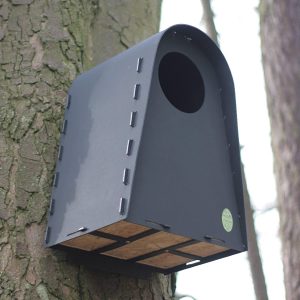 Some species prefer a nestbox with a large entrance hole
Some species prefer a nestbox with a large entrance hole
Examples are:
Jackdaw, Stock Dove, Tawny Owl
Choose this design if you’re interested in attracting these birds to your garden.
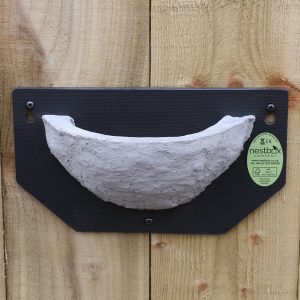 Some species have special requirements
Some species have special requirements
Examples are:
Swallow, House Martin, Swift
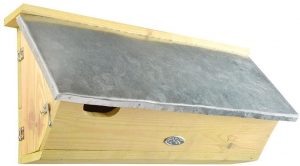
Choose these designs if you’re interested in attracting these birds to your garden.
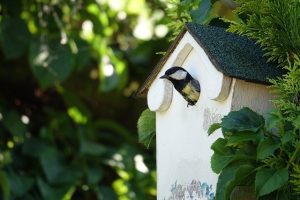
When and Where to Site a Nestbox
Where you put our nestbox is more critical. Here are some simple rules to follow:
- Give them some space: Nestboxes of the same type shouldn’t be put too close together, as this will increase competition for food and you may encourage aggressive behaviour between neighbours.
- Choose a peaceful spot: Don’t put them close to bird feeders. Lots of visiting birds will disturb the nesting pair.
- Shelter from the weather: Angle the front of the nestbox slightly downwards to prevent rain from entering. Make sure it is facing in a northerly or easterly direction to protect it from wind and strong sunlight.
- Obscure the view: Attach open-fronted boxes to a wall or fence that has shrubs and creepers growing against it.
- Trees, sheds or walls: Aim to place small-hole boxes 1-3m above the ground, and avoid sites where foliage obscures the entrance hole.
- Keep predators out: Ensure the box is not easily accessible to predators like cats and squirrels.
Looking After Your Nestbox
A bit of routine maintenance can make all the difference when it comes to attracting birds to use them.
It is important to get in the habit of checking all your nestboxes before each new breeding season. September is the best time. Although this is long before it will be used for breeding, If the weather turns cold, birds may decide to roost in a nestbox for extra warmth.
Refresh your nestboxes by removing old nests from boxes and recycle them in your compost bin. Use a stiff bristled brush to removing hardened debris from the box corners.
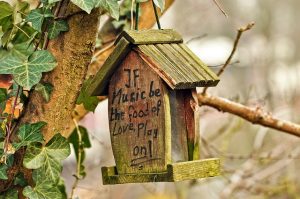
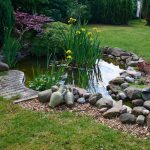
Leave a Reply